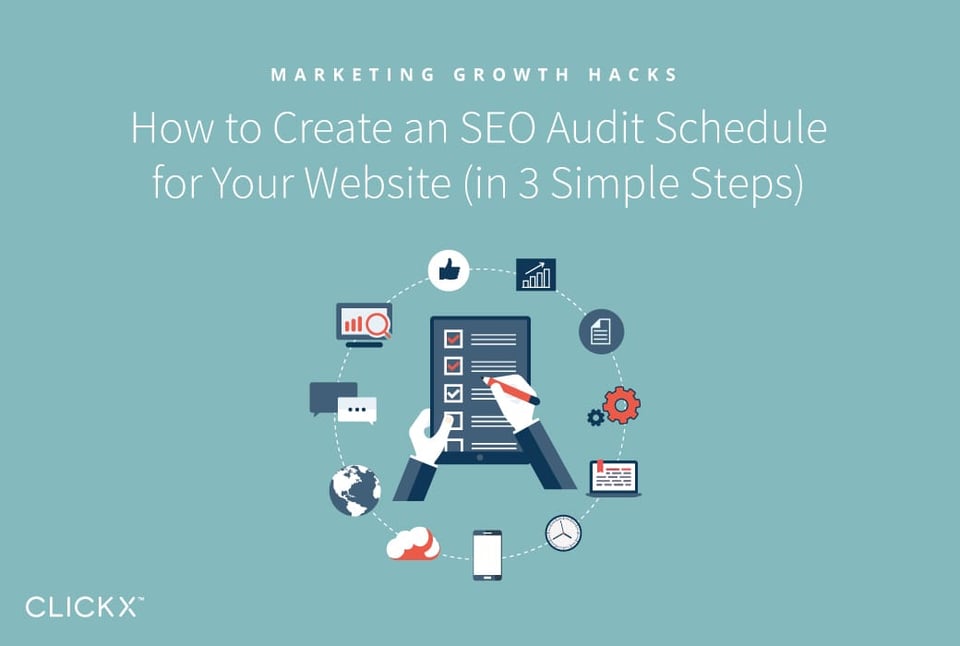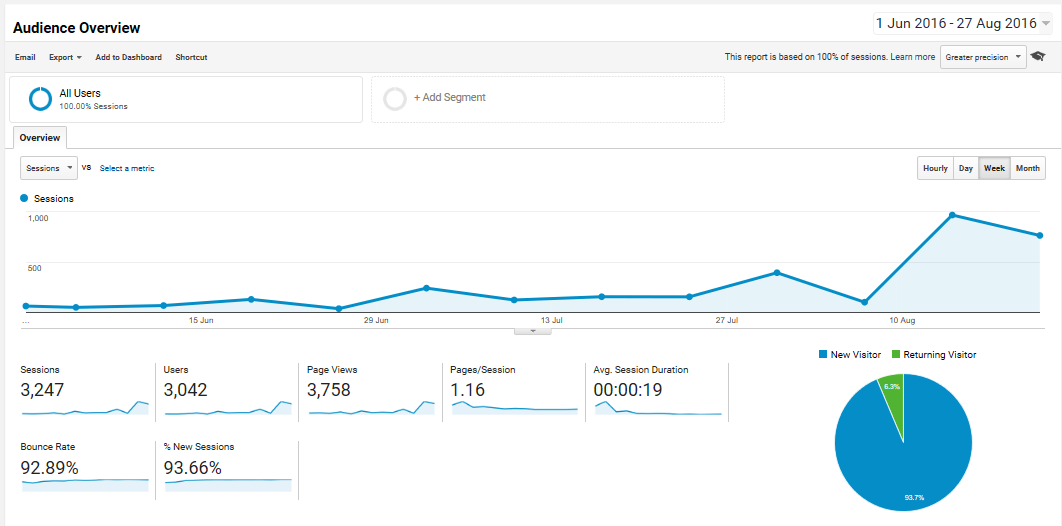How to Create an SEO Audit Schedule for Your Website (in 3 Simple Steps)
‘Chaos’ may be the first word that comes to mind when you think about managing your business website and its content marketing strategy. You’re not alone! Keeping track of all the moving parts and long-term goals involved in SEO can be a serious challenge, especially considering the learning curve.
One way to maintain order is to create a schedule that accommodates the biggest pieces of the SEO puzzle. Exactly how you map out such a schedule will depend on your business, goals, and industry. However, one thing is certain: having a plan in place can eliminate a lot of the guesswork!
If you’re ready to create a schedule that suits your company’s website goals, buckle up. We’re going to tell you how to create an SEO audit schedule for your site, in three simple steps.

Key Takeaways
- A regular content schedule builds trust and can improve your indexing times, even influencing search engine rankings.
- Finding the right keywords represents a moving target, so evaluation and adjustments are key to a successful long-term campaign.
- Traffic and conversion rates tracked over a long period of time let you know if your content marketing strategy is working.
Step 1: Decide How Often to Publish New Content
Of course, the success of content marketing relies on having quality content. Your first order of business should be to regularly publish impeccable content that benefits your intended readers, in order to woo them as potential customers.
[Tweet “Consistently create impeccable content that benefits your intended readers.”]
Consistent, frequent publishing is important for a few reasons:
- It builds trust with your visitors. This is a major goal of your content, which is why we’ve listed it first.
- It gives your team targets to hit. Deadlines can be motivating!
- Fresh content signals to Google that your site is active. This can have an effect on how quickly Google lists your new posts in search engines, and can even play a role in rankings.
Creating a publishing schedule can help you stay on track to ensure you’re delivering regular, fresh content. If you don’t have one already, we recommend creating your own editorial calendar using a tool such as CoSchedule:

Here are some starting points for determining what your schedule should look like:
- Scope out the competition. How often do they publish?
- Keep up-to-date with trends. What seems to be standard right now?
- Understand your position. Where does your business fall within the benchmark criteria?
Aside from these factors, also bear in mind how many pieces and what type of content you can reasonably produce to a high standard. Remember that quality always beats quantity.
Step 2: Plan to Evaluate Keywords Frequently
Now that you’re set up with a publishing calendar, you’ll want to plot which keywords will best serve your business goals. These will drive your content marketing strategy as you’ll define exactly what content you’ll publish to target them.
Of course, it’s practically impossible to nail the right keywords on the first try. Even if you do hit them on the head, keywords are an ever moving target as trends change, industries evolve, and competitors step up their game. The best keywords today may not be the right ones next month or next year.
[Tweet “Keywords are an ever moving target; what works today may not work as well next month or next year.”]
Adding keyword evaluation to your schedule will help make sure you stay on target and prompt you to make important changes. Here’s what we recommend:
- Understand Google’s indexing process and follow best practices. For starters, create an XML sitemap that updates when you publish a new post.
- Make a note of how long it takes for your new posts to be indexed.
- Choose a time period (e.g. two weeks) to focus on promoting each post and hopefully earn some backlinks.
- Now, double your index estimate (from step two) to account for Google having time to index your new backlinks.
- Add your new indexing time to the promotion time (from step three). This total will serve as an estimate for how long your content needs to start competitively ranking for keywords.
Now that you’ve estimated keyword ranking times, you can build keyword evaluation sessions into your schedule. Moreover, you can use handy tools like the Clickx App to track your rankings.
Step 3: Review Traffic and Conversion Statistics Regularly
Finally, you need to measure your progress as it relates to your business. Regularly published content helps you rank for keywords, which increases your web traffic. If you maintain or improve conversion rates as your traffic increases, your revenue grows with it.
As you can see, content marketing is a long-term strategy. It’s important to remember to review benchmarks along the way to evaluate whether your efforts are working. Analytics tools such as Google Analytics can provide you with the data you need to carry out a proper assessment.

[Tweet “Reviewing traffic and conversion statistics can help you evaluate your content marketing strategy.”]
The time between reviews will depend on your unique situation, but monthly and quarterly assessments are common. They should be far enough apart for change to occur, but frequent enough to allow you to make necessary adjustments.
Here are some examples of what to check for during such a review:
- Keywords you’ve been targeting versus the type of leads you’ve earned.
- Content consistency (length, frequency, day of the week, subject) in contrast to how quickly your traffic increased.
- Fluctuations in traffic compared to conversion numbers. Remember that higher traffic volume doesn’t always lead to more conversions.
As you see patterns emerge from these numbers, you can adjust as necessary. For example, if people are resonating with a certain type of content, you may want to create more of it. Similarly, if a series of related keywords are earning qualified leads, you may want to expand their use, or find more related keywords to target.
Conclusion
Trying to keep track of your business’ website SEO goals can be chaotic and overwhelming. Without careful planning, there are so many details that can slip through the cracks and potentially undermine your efforts. By creating a schedule to address the fundamental elements of your strategy, you can rest easy knowing you’ve got the most important components covered.
In this post, we’ve revealed three steps for creating an SEO audit schedule for your business. Let’s recap them quickly:
- Decide how often to publish new content.
- Plan to evaluate keywords frequently.
- Review traffic and conversion stats regularly.
Do you have any questions about auditing your business site? Let us know in the comments section below!



